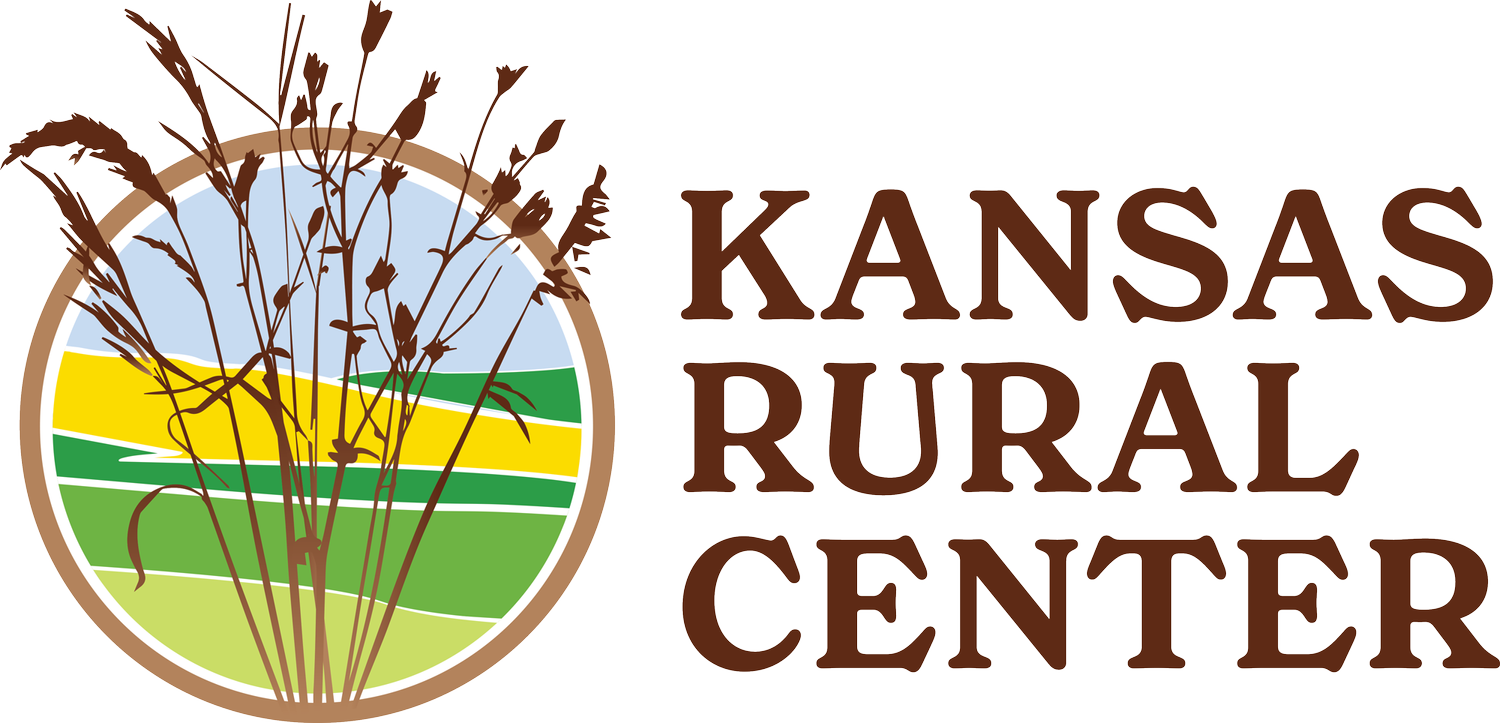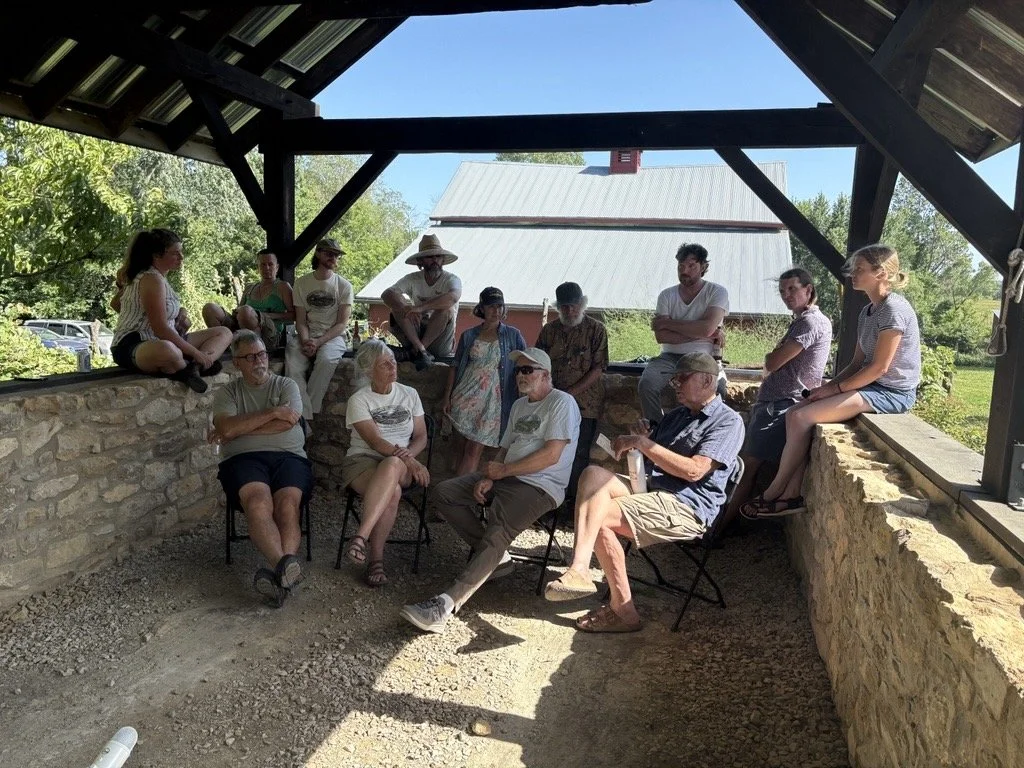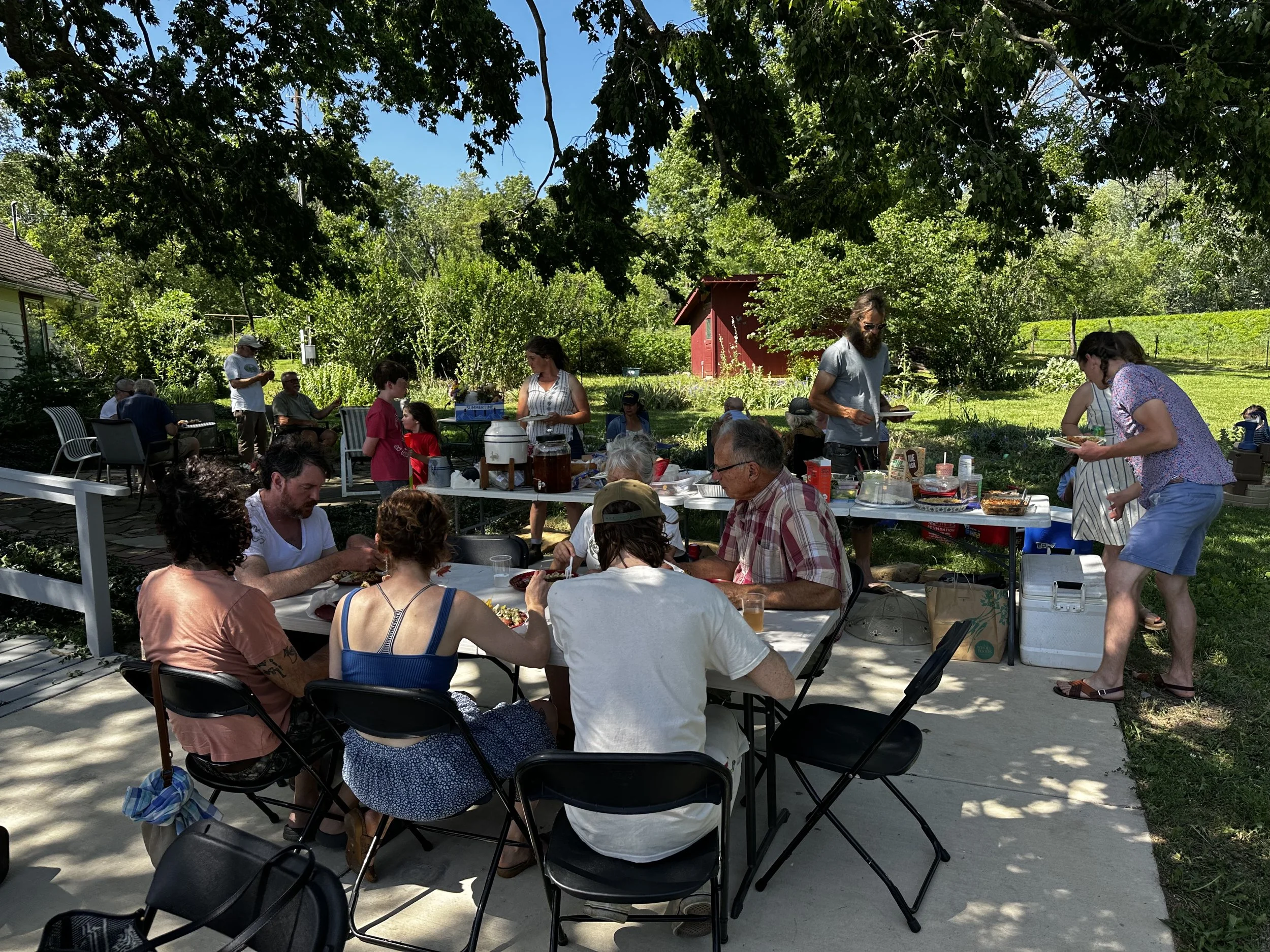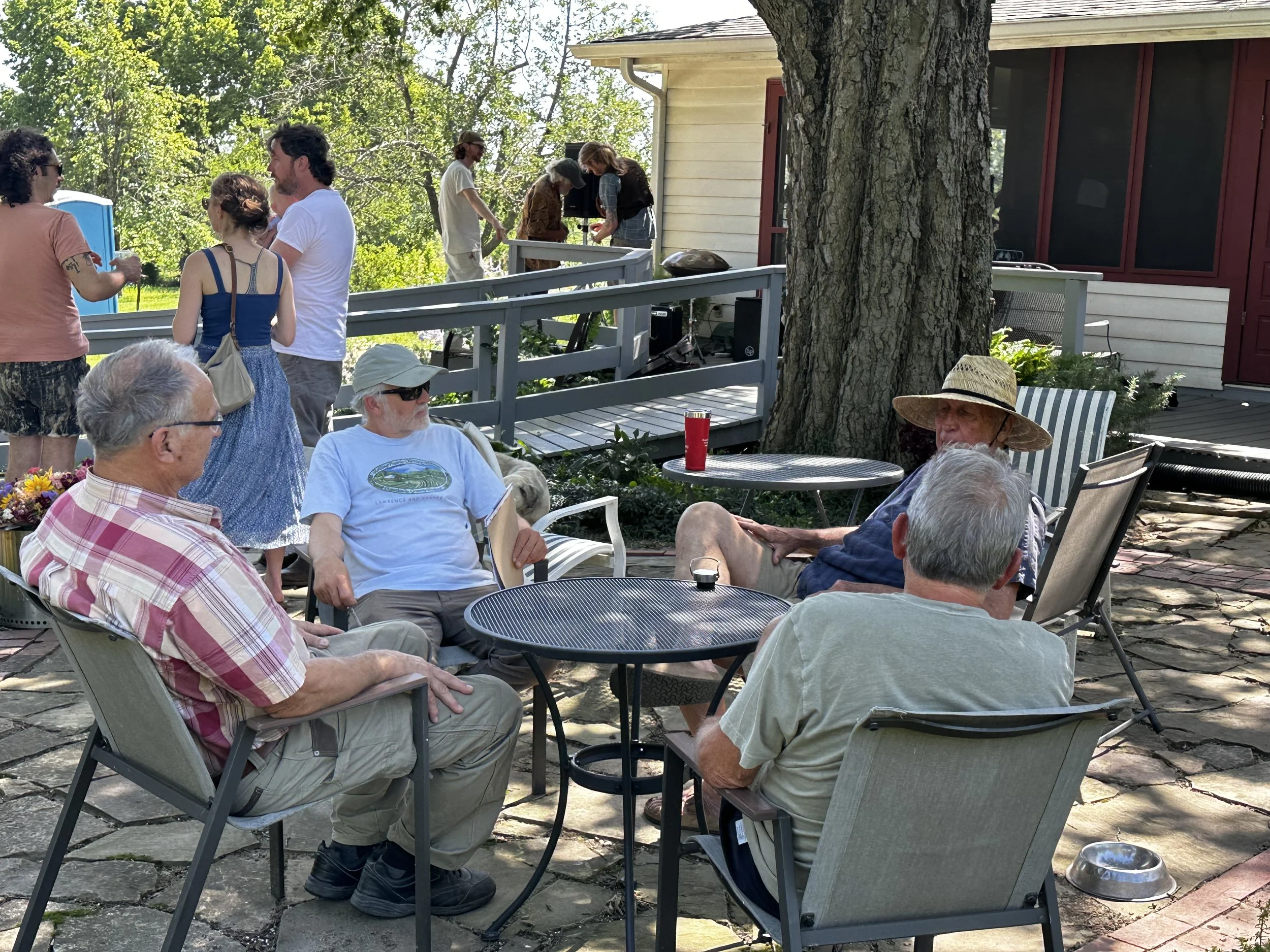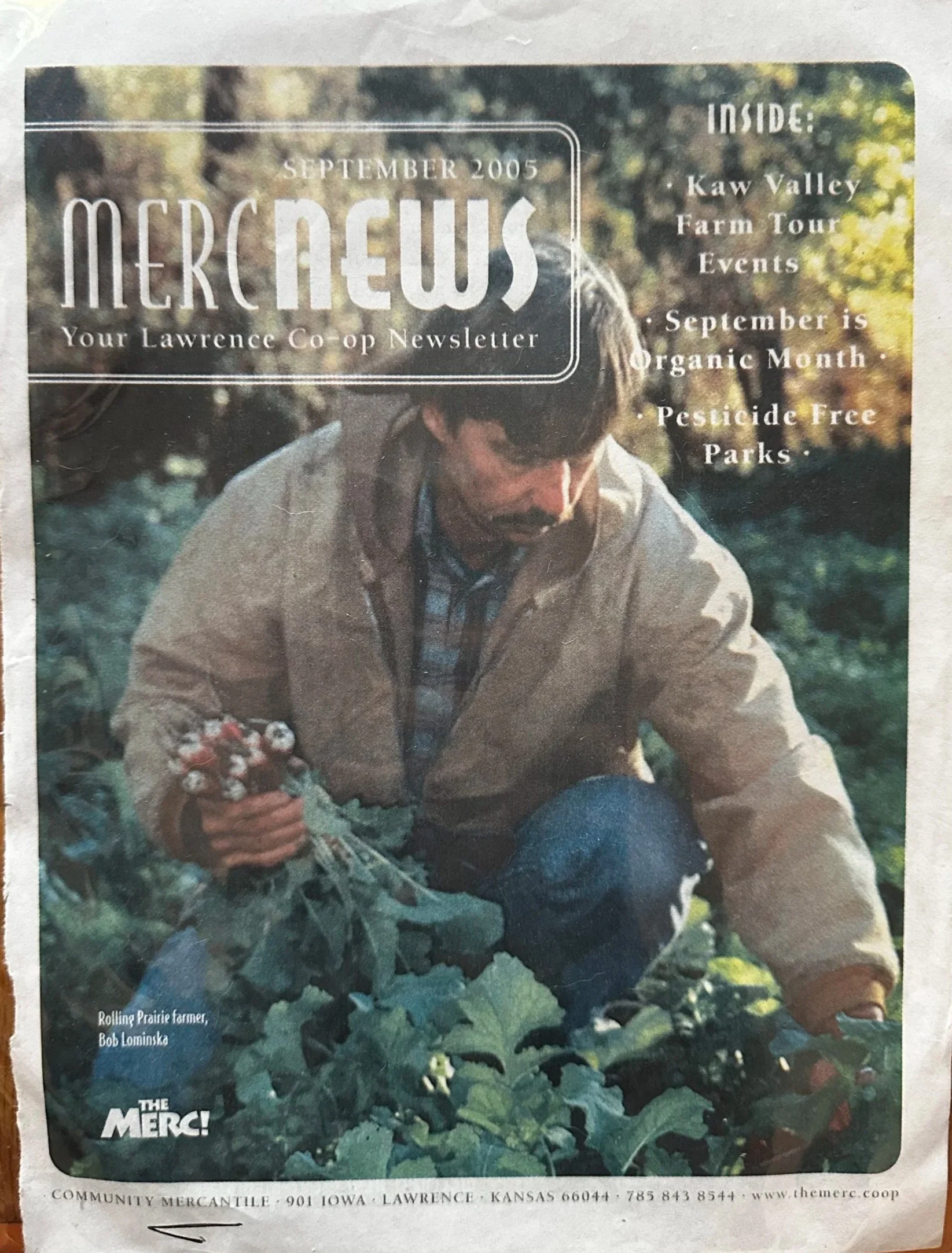Rolling Prairie: A Story of Community and Farming
This Spring, the farmers past and present of the Rolling Prairie Farmers Alliance convened to celebrate their 30th Anniversary. The afternoon consisted of a delicious potluck, a display of years of articles highlighting the organizations work and the warm conversation among old friends, interwoven with the notes of a string band on Joy Lominska’s porch and the next generation of farmers, age 10 and below wildly loving their time outdoors.
Rolling Prairie didn’t start in a boardroom, but in Joy Lominska’s living room. Neighbors and friends crowded together with dishes in their laps, kids weaving between chairs. They had met in restaurants at first, but potlucks at home were warmer, cheaper, and more fitting for farmers who wanted to share not just produce, but community.
It was there, between casseroles and laughter, that a name was born: Rolling Prairie Farmers Alliance. “Alliance” signaled solidarity without the weight of incorporation. Joy later discovered the phrase “rolling prairie” had appeared in an 1856 land survey — she hadn’t invented it, she’d revived it, connecting the past with a new vision for local food. That night, the foundations of the country’s first multi-farm CSA were laid.
First Harvests
The first season was chaotic but strengthened the community of farmers. All hands hauled crates of kale, baskets of tomatoes, and rattling coolers of cucumbers to the Merc in Lawrence. Everyone helped pack bags for members — children counted carrots while adults discussed next year’s planting plans.
Unlike single-farm CSAs elsewhere, Rolling Prairie pooled multiple farms. If hail flattened one grower’s peppers, another could provide. The concept was radical: cooperation offered both food security for the community and stability for farmers. Bonds formed during those long nights of packing, turning shared labor into a shared dream.
Money was always tight. Most founders kept day jobs; farming alone wouldn’t pay the bills. “For the first ten years, everything went to the mortgage,” Joy said. “We were impoverished.” Yet they endured, for the love of the land, the food, and each other.
“Seconds,” bruised tomatoes, crooked cucumbers, weren’t sellable, but fed the families. Peak gross income for the CSA barely reached $50,000 for the group. Still, small farms thrived together where they could not have survived alone.
Lessons and Legacy
Rolling Prairie became a living apprenticeship. Young farmers like Rolf and Bobby started hauling vegetables and learning row by row, borrowing land and tractors, guided by patient mentors. Avery Lominska, Joy’s son, inherited not just fields, but decades of accumulated knowledge. By the 2010s, full-time farmers emerged from the CSA, ready to carry the work forward.
Mentorship, shared land, and community support transformed survival into sustainability. Running the CSA wasn’t just growing food; it was managing people, logistics, and relationships. Bags went missing, cucumbers and watermelons rolled loose into carts, and phones rang with complaints. Everyone took ownership and built strength together.
The CSA introduced thousands of Kansans to kale, spring mix, daikon, and garlic scapes before they became commonplace. Customers learned to cook unfamiliar vegetables, developing adventurous tastes, while farmers learned collaboration, seasonality, and pricing. Rolling Prairie became more than food — it was a living classroom for both growers and eaters.
An Enduring Impact
Memorable moments peppered the CSA’s history: Avery’s wallet, full of farmers’ market cash, was tilled under and rediscovered moldy but intact months later. A truckload of loose watermelons forced volunteers to improvise storage. A wedding ring went missing in the field.
Rolling Prairie weathered fads, competition, and crises, including COVID-19, when membership surged as people sought local food security. Customers often stayed for meaning, not bargains. “It’s a moral identification,” said Rolf. “People feel like they’re part of something that matters.”
Today, the CSA’s legacy is clear: it positively impacted Kansas food culture, cultivated new generations of farmers, and proved that small, cooperative farmer organizations could thrive. Beyond vegetables, Rolling Prairie grew trust, resilience, and community, a reminder that the work of farming is ultimately about connection.
Farms represented in this photo: Conway’s Produce, East Stone House Creek Farm, The Garden at Dogwood Forest, Groundspeak Farm, Hayland Farm, Herdsman House Farm, LLC, Open Petal Farm, Sandheron Farm, Soul of Soil Farm, Star Field Abbey Farm, Wild Hollow Farm, Wild Onion Farm, Wakarusa Farm
Farms represented in these photos: Conway’s Produce, East Stone House Creek Farm, The Garden at Dogwood Forest, Groundspeak Farm, Hayland Farm, Herdsman House Farm, LLC, Open Petal Farm, Sandheron Farm, Soul of Soil Farm, Star Field Abbey Farm, Wild Hollow Farm, Wild Onion Farm, Wakarusa Farm
Article by Charlotte French-Allen
